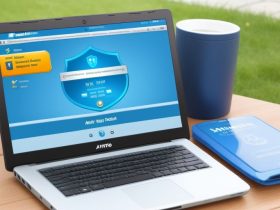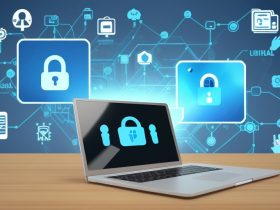In today’s digital age, protecting your data online has become more critical than ever. With cyber threats on the rise, your personal information, financial details, and online privacy are constantly at risk. Did you know that a cyberattack occurs every 39 seconds? This alarming statistic highlights the importance of taking proactive steps to safeguard your data. Whether you’re browsing social media, shopping online, or managing your finances, understanding how to protect your data online is essential for staying secure in the digital world.
Why Data Protection Matters
Data breaches and identity theft are no longer rare occurrences. In 2023 alone, millions of individuals fell victim to cybercrime, resulting in significant financial losses and emotional distress. Your data is a valuable asset, and hackers are constantly looking for ways to exploit vulnerabilities. By taking the right precautions, you can minimize the risk of becoming a target and ensure your online presence remains secure.
Common Online Threats You Should Know
Before diving into protective measures, it’s crucial to understand the threats you’re up against. Here are some of the most common online risks:
- Phishing Attacks: Cybercriminals use deceptive emails or messages to trick you into revealing sensitive information.
- Malware and Ransomware: Malicious software can infect your devices, steal data, or lock your files until a ransom is paid.
- Data Breaches: Unauthorized access to databases can expose your personal information.
- Weak Passwords: Simple or reused passwords make it easy for hackers to gain access to your accounts.
How to Protect Your Data Online: Essential Tips
Now that you’re aware of the risks, let’s explore actionable steps to protect your data online. These strategies will help you stay one step ahead of cybercriminals.
1. Strengthen Your Passwords
Creating strong, unique passwords is one of the simplest yet most effective ways to secure your accounts. Aim for passwords that are at least 12 characters long and include a mix of letters, numbers, and symbols. Avoid using easily guessable information like birthdays or common phrases. Additionally, consider using a password manager to generate and store complex passwords securely.
2. Enable Two-Factor Authentication (2FA)
Two-factor authentication adds an extra layer of security to your accounts. Even if someone manages to guess your password, they won’t be able to access your account without the second verification step, such as a code sent to your phone or email. Enable 2FA wherever possible, especially for critical accounts like banking and email.
3. Keep Your Software Updated
Outdated software is a goldmine for hackers. Regularly updating your operating system, apps, and antivirus software ensures that you have the latest security patches and protections. Set your devices to update automatically so you never miss a critical update.
4. Be Cautious with Public Wi-Fi
Public Wi-Fi networks are notoriously insecure, making them a prime target for cybercriminals. Avoid accessing sensitive information, such as online banking, while connected to public Wi-Fi. If you must use it, consider using a virtual private network (VPN) to encrypt your internet traffic and protect your data.
5. Recognize and Avoid Phishing Scams
Phishing scams often disguise themselves as legitimate emails or websites. Be wary of unsolicited messages asking for personal information or directing you to click on links. Always verify the sender’s identity and double-check URLs before entering any sensitive details.
6. Secure Your Social Media Accounts
Social media platforms are a treasure trove of personal information. Adjust your privacy settings to limit who can see your posts and personal details. Avoid sharing sensitive information, such as your address or phone number, publicly.
7. Back Up Your Data Regularly
Regular data backups ensure that you won’t lose important information in case of a cyberattack or hardware failure. Use an external hard drive or cloud storage service to back up your files, and make it a habit to do so consistently.
8. Use Encryption Tools
Encryption transforms your data into an unreadable format, making it inaccessible to unauthorized users. Use encryption tools for sensitive communications, such as emails or file transfers, to add an extra layer of protection.
The Role of Awareness in Data Protection
While tools and techniques are essential, awareness is your first line of defense. Stay informed about the latest cyber threats and educate yourself on best practices for online safety. By adopting a proactive mindset, you can significantly reduce the likelihood of falling victim to cybercrime.
Real-World Examples of Data Breaches
Learning from real-world incidents can help you understand the importance of data protection. For instance, the 2017 Equifax breach exposed the personal information of over 147 million people, leading to widespread identity theft. Such examples underscore the need for robust security measures.
Final Thoughts
Protecting your data online is not a one-time task but an ongoing process. By implementing the strategies outlined above, you can safeguard your personal information and enjoy a safer online experience. Remember, the digital world is constantly evolving, and staying vigilant is your best defense against cyber threats. Take charge of your online security today and make data protection a priority in your digital life.












Leave a Reply